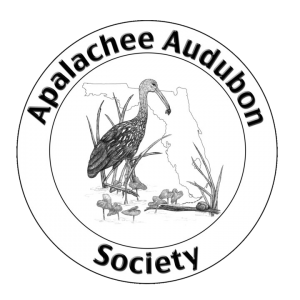Cave entrance in Aucilla WMA
By Peter Kleinhenz
Aucilla Wildlife Management Area (WMA( occupies over 50,000 acres of Jefferson County, just a few miles east of the Tallahassee city limits. The area contains well-managed upland forest, pine flatwoods, much of the Wacissa and Aucilla Rivers, and...caves. Lots and lots of caves.
The substrate sits atop a bed of limestone, a porous mineral susceptible to the carving powers of water. This is evidenced by the many karst features found in this WMA.
I love caving. It's probably my favorite thing to do, but it isn't always conducive to birding. However, every once in a great while, two of my favorite hobbies can be combined into one. That was the case a couple of months ago when I joined my friend, Matthew Bull, from the Flint River Grotto, a local caving club, to search for caves in a remote part of the WMA.
The heat was oppressive as we bushwhacked through thorn bushes and dense vegetation. As no cave materialized, I began to lose my patience.
"Matt, are you positive about the direction we're going?" I asked. "It seems like we've been going in circles."
And, it turned out, we were. Now, normally, this would not have been a huge deal, if a little inconvenient. But we had already reached wits' end. Earlier, Matt had looked down at his pants and noticed hundreds of crawling arachnids. No, these weren't ticks as he originally thought. I knew better. These were chiggers.
The pace picked up and the caves seemed less important now. Still, we were determined. I began to notice small exposures of limestone here and there, and my cave sense began to tingle. Sure enough, the entrance to the largest of the caves we were to visit that day was less than thirty feet away.
What would a cave be without giant spiders?
I peered into the hole that disappeared into the side of a sinkhole. The water levels were too high to go very deep, but I poked around the entrance. Unusually, the water was crystal-clear. This meant that the water in this cave was directly tied to the water table and not the underground Aucilla River that flowed somewhere under our feet nearby. I peered around the mossy crevices associated with the entrance. A large fishing spider scuttled away into one deep crevice. A southern cricket frog leaped into a pool of water. And then I saw something shocking.
In an upper crevice of the entrance passage, I spotted a nest. This nest was composed of moss and short twigs, and had a perfectly-round shape. I knew immediately what it was: the nest of an Eastern Phoebe.
Now, this may not seem that unusual. We see Eastern Phoebes all the time. But, according to FWC cave research, Jonathan Mays, only six nests have been documented in the state in recent times. All of these were in cave entrances in Jackson County, near Florida Caverns State Park. We had talked previously about the possibility of phoebes nesting in other Florida caves but, until that day, that was just a theory.
First documented nest of an Eastern Phoebe in Jefferson County, Florida.
Matt and I were both excited but had other things on our mind at this point, namely the hundreds of chiggers actively creating hardened feeding tubes in our flesh. We found our way back to our vehicles, drove to a boat landing on the Wacissa River, and jumped into the cool, spring-fed river with our clothes on.
We checked in with each other a few days later. Yes, we were both covered in chiggers. No, they were not getting better. But, hey, at least we found a phoebe nest. Birding brings out the best of any occasion, it seems.



